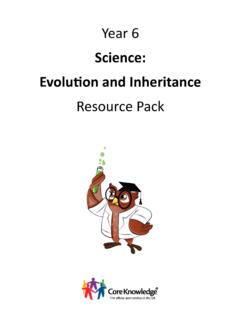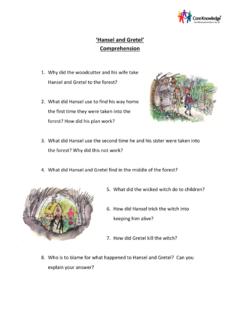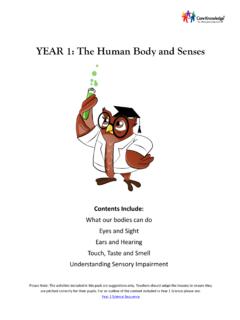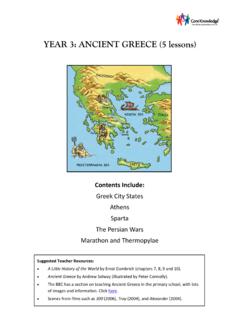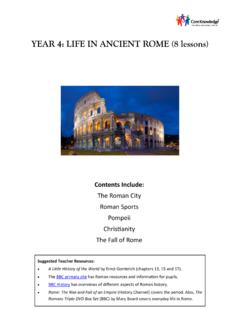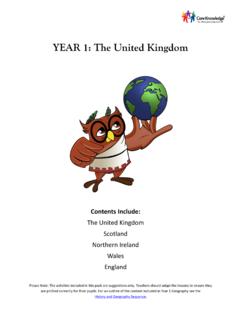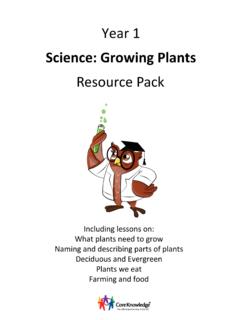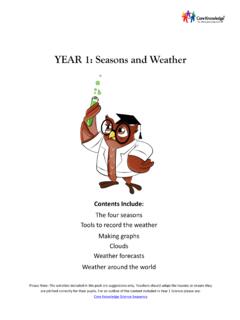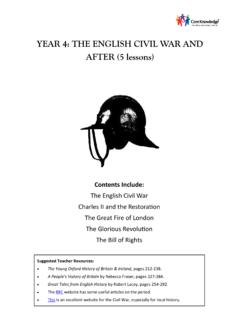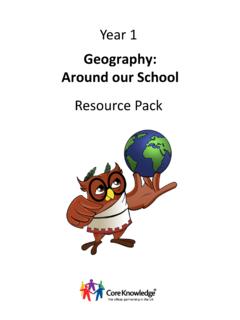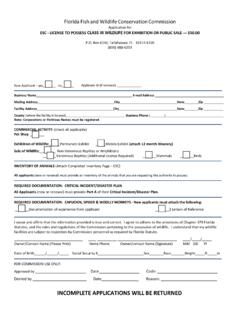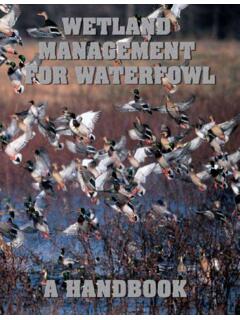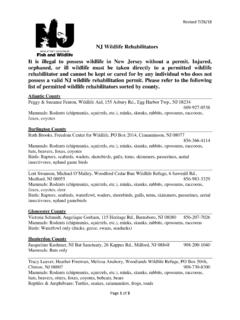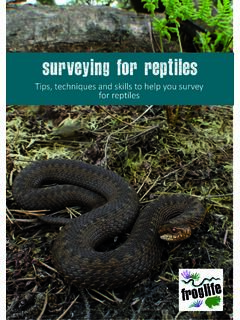Transcription of Year 1 Science: Animals Resource Pack - Core Knowledge UK
1 Year 1 Science: Animals Resource Pack Including lessons on: Exploring different types of animalsSorting and grouping animalsKeeping Animals as pets What Animals eatScience Unit Overview Year One Animals and their Needs Amazing Animals Some Animals live in water, some live on land, some fly in the sky. Animals have special features that help them to survive. Animals can be grouped according to their features. amphibians are cold blooded Animals that live in water and also on land. They lay eggs underwater. Mammals are warm blooded Animals give birth to live young. What Animals Eat & Keeping Pets Animals that eat other Animals are called carnivores.
2 Animals that eat plants are called herbivores. Animals that eat both plants and other Animals are called omnivores. Some Animals are suitable for keeping as pets but some are not. Pets need food, water, space, shelter and medicine. Animals that are not pets are known as wild Animals . Information Texts Animals Some Animals have similarities, some are very different. Fish have gills to help them breathe, fins to help them swim and scales to protect their bodies. Birds have beaks to help them eat, wings to help them fly, claws on their feet to help them grip and feathers to help them keep warm.
3 Amazing Animals Give children an opportunity to share what they already know about Animals . Record this through writing/drawing/ICT etc. Show children images of a range of Animals including birds, fish, amphibians , reptiles , mammals and invertebrates. Children could make an animal gallery on a display board. Discuss and create a presentation for one animal in detail explaining that its features help it to survive. Looking after pets RSPCA education online How to look after pets. Design a guidebook for looking after pets Visit from a pet owner (check safety of pet) to discuss responsibilities.
4 Sort which Animals would be suitable for keeping as pets and which would not. Create a video explaining what pets need. Information Texts Animals Children will write a description of at least two Animals . (see Resource ) This can be differentiated to support less able writers and to extend the more able. If there is curriculum time available, children could complete a booklet with a variety of different Animals included. Children could present their information to another class or in an assembly. Children could be recorded talking about their Animals and the clips put together to make a short film.
5 Core Knowledge Creative application of Knowledge Lesson 1. Amazing Animals This lesson is the first in a series that introduces children to the world of Animals . In this lesson, teachers will find out what their pupils know already about Animals . They will then teach relevant vocabulary in order for children to identify a range of common Animals . Teachers will then introduce the idea that Animals can be grouped according to particular features. See Page 261 of What Your Year 1 Child Needs to Know Learning Objective Core Knowledge Activities for Learning Related Vocabulary Assessment Questions To name and describe a variety of Animals .
6 There are many different types of Animals . Some Animals live in water, some live on land, some fly in the sky. Animals have special features that help them to survive. - Give children an opportunity to share what they already know about Animals . Use this information to pitch your subsequent lessons. ( Resource 1) - Show children images of a range of Animals including birds, fish, amphibians , reptiles , mammals and invertebrates. Ensure children become familiar with the names of these Animals . - Discuss one animal in detail explaining that its features help it to survive. Eg a polar bear has thick fur and a layer of fat to keep it warm.
7 It has sharp teeth and claws for catching Animals to eat. It has fur on the soles of its feet to keep them from freezing on the ice. *Children do not necessarily need to understand the differences between mammals/ reptiles etc at this stage but they should find out about a range of Animals . Animal names including: Birds: blackbird, seagull, pigeon Fish: salmon, tuna, mackerel, goldfish amphibians : Frog, toad, salamander, newt reptiles : crocodile, turtle, alligator, snake Mammals: mouse, lion, dog, deer, human Invertebrates: worm, jellyfish, spider, lobster What can you tell me about birds? What Animals might you find underwater?
8 Can you describe an animal that has special features that help it to survive? Prior learning assessment Date: What I Know About Animals Lesson 2. Grouping Animals This lesson introduces the concept of sorting Animals according to their features. Children will understand that scientists group Animals according to their features. Scientists look at similarities between different Animals and use certain similarities to group them. For example, amphibians spend some of their life underwater and some of their life on land. But amphibians always lay their eggs underwater. reptiles can also live on land or underwater, but they always lay their eggs on land.
9 Learning Objective Core Knowledge Activities for Learning Related Vocabulary Assessment Questions To understand that we can group Animals according to their features. Animals can be grouped according to their features. amphibians are cold blooded Animals that live in water and also on land. They lay eggs underwater. Mammals are warm blooded Animals give birth to live young. - Give children images of many different Animals including birds, fish, amphibians , reptiles , mammals and invertebrates - Explain that we can group Animals according to their features. Ask children to discuss how they might group the Animals provided.
10 Allow children to explore sorting Animals and discuss how they decided to sort 4 legs, wings etc. - Explain that scientists use special categories to sort Animals . Teach children the words amphibian and mammal as two examples of animal groups. Give lots of examples of each, explaining why they are a mammal or an amphibian. See Resource . - Children to record their sorting either through drawing or writing animal names in relevant categories. sorting, grouping, features, legs, wings, fur, tail, underwater, air, amphibian, mammal How do scientists group Animals ? Why do you think it might be helpful for scientists to group Animals ?
